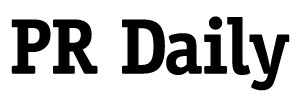How internal communicators can reduce information overload
How information overload affects communication.

Thanks to the internet, it’s never been easier to send a message, look up a statistic, or schedule a virtual meeting with colleagues who live in different time zones.
While the ability to both create and access information with minimal effort can make workers more productive, it can also have the opposite effect. A barrage of emails, news alerts, and PDFs shared on Slack can lead to information overload, which results in a workforce that’s overwhelmed and underperforming.
In other words, sometimes too much of a good thing can be bad for business. Keep reading for tips on reducing information overload within your organization.
What is information overload in communications?
Let’s start with a definition. Information overload is a frustrating feeling that occurs when someone has too much data at their fingertips for the mind to process. The sheer volume of facts, figures, opinions and perspectives on a topic makes it difficult to arrive at a satisfying conclusion or decide on a plan for moving forward.
While not identical, it’s related to the idea of paralysis by analysis — except the root problem isn’t as much a matter of overthinking as it is having too much material to think about.
Additionally, overload occurs in communications when employees receive too many messages. Whether it’s by email, Teams, Sharepoint or another channel, employees will simply tune out if too much information comes their way, especially if its redundant information posted on multiple channels or the information doesn’t apply to them specifically.
On another level, information overload in the modern workplace also involves the issue of interruption. In fact, a study of 20 teams across three Fortune 500 companies found that the cost of switching between apps is a little over two seconds, and the average user toggled between apps nearly 1,200 times per day. Add it up, and employees spend almost four hours a week reorienting themselves, with nine percent of their annual work time lost to context switching.
Whether it’s a text message getting in the way of writing an email, or an email getting in the way of paying attention to a presentation, distractions are everywhere. Employees are constantly switching their focus from one task to another, having to evaluate what’s urgent versus what’s important.
Why information overload is a problem
A company that fails to manage information overload will eventually run into trouble.
Some employees, suffering from decision fatigue and exhausted from toggling between multiple channels of communication depending on the task, will get burned out and quit.
Those who remain in their role won’t be as productive as they could be if interruptions were kept to a minimum.
Either way, both situations — whether it’s high turnover or low output — are bad for a business’s bottom line.
The irony, of course, is that the same tools intended to streamline communication and spur creativity may actually impair collaboration, decision-making and innovation as employees struggle to filter out irrelevant information and prioritize their tasks effectively.
How to deal with information overload
All that said, internal communications have a few ways to fight back against information overload. Some examples are below.
- Reduce the number of communication channels: In the digital age, almost anyone can create yet another line of communication with just a few clicks. This can range from starting a new email thread to setting up a new group of cross-functional coworkers within a project management platform. Given the context, less can be more. Audit your communications channels and limit the avenues of communication, leaving employees with only the most efficient options.
- Teach employees how to communicate effectively: Some colleagues may be better at getting to the point than others. Some might have a knack for knowing when a phone call with one person can replace a 30-minute meeting with a dozen. For everyone else, however, some training can do wonders at fixing bad habits that contribute to information overload across the company.
- Encourage coworkers to disconnect: The expectation for employees to maintain an always-on mindset is guaranteed to result in more stress. The idea that everyone should be available at every minute throughout the day to respond to a message will only increase anxiety. Let colleagues know it’s perfectly fine to minimize notifications and turn off non-essential alerts when focused on completing an assignment. Set boundaries.
- Segment audiences to send targeted communications: Rather than email everyone within the organization with news and announcements that may only matter to certain departments or individuals, segment your lists. No one needs to receive every update. Data shows that communications sent to audiences of 5000 or less receive the highest amount of employee engagement. An added bonus to this approach: The more precise the group of employees, the more likely they are to engage with the content.
- Let employees set their own communication preferences: While it’s unrealistic to provide a completely unique communication experience for everyone at the company, some modifications can go a long way in cutting down on information overload. Ask employees which channels work best for their role. Let them follow or subscribe to specific authors and publications. Provide a way to bundle company news into a weekly digest, if that makes their lives easier.
- Pick a cadence and commit to it: People feel less frazzled when surrounded by structure. They tend to gravitate toward order to escape chaos. If your organization disseminates information through a newsletter or podcast, establish a publishing schedule and stick to it. Likewise, if you conduct an annual employee survey, make sure the rollout is similar from one year to the next. If you present new information in a reliable and familiar format, employees are less likely to consider it a burden to consume.
A future without information overload
While information overload can feel like an inevitable outcome of doing business in 2025, it doesn’t have to be.
Proven strategies can help reduce the noise that accompanies all digital forms of communication while equipping employees to make informed decisions without feeling a need to know everything there is to know.






